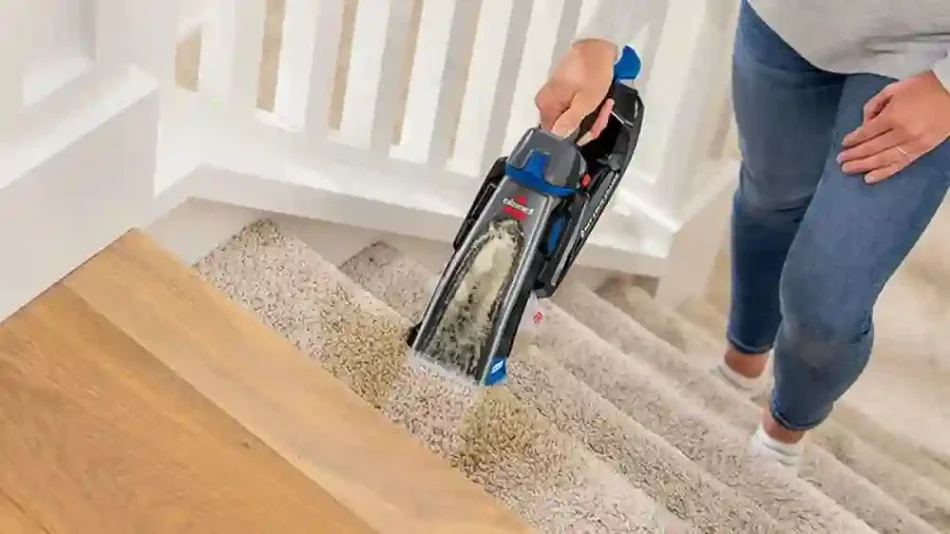Rugs are not only functional but also add warmth, texture, and style to our living spaces. However, in high-traffic areas of our homes, such as hallways, entryways, and living rooms, rugs can quickly accumulate dirt, stains, and wear. To keep your rugs looking fresh and inviting, regular cleaning and maintenance are essential. In this article, we will explore the unique challenges high-traffic areas present and provide tips and techniques for effective rug cleaning.
The Challenges of High-Traffic Areas
High-traffic areas in our homes are subjected to more wear and tear than other spaces. As a result, the rugs in these areas face specific challenges:
- Dirt and Dust: Foot traffic brings in dirt, dust, and debris that settle into the rug fibers, making them look dull and dingy.
- Stains: Spills and accidents are more likely to occur in high-traffic areas, leaving behind stubborn stains that can be challenging to remove.
- Wear and Tear: Continuous walking or furniture placement can cause the rug fibers to wear down, leading to thinning, fraying, and bald spots.
- Allergens: Dust, pet dander, and allergens can become trapped in high-traffic area rugs, potentially exacerbating allergies and respiratory issues.
Regular Maintenance for High-Traffic Area Rugs
To keep high-traffic area rugs fresh and in good condition, adopt a regular maintenance routine:
- Frequent Vacuuming: Vacuum your rug at least once a week, focusing on the areas with the most foot traffic. Use a vacuum cleaner with a HEPA filter to capture fine particles and allergens effectively.
- Rotate Your Rug: Rotate the rug periodically to distribute wear evenly. This prevents specific areas from wearing out faster than others.
- Use Rug Pads: Place rug pads under your high-traffic area rugs. Rug pads provide cushioning, prevent slipping, and protect both the rug and the floor underneath.
- Spot Clean Promptly: Address spills and stains as soon as they occur. Blot the stain gently with a clean cloth or paper towel, working from the outside in to prevent spreading. Use an appropriate stain remover or a mixture of mild dish soap and water for spot cleaning.
- Protect with Furniture Pads: If furniture sits on the rug, use furniture pads underneath the legs to distribute weight evenly and prevent indentations.
Deep Cleaning High-Traffic Area Rugs
While regular maintenance helps, high-traffic area rugs will eventually require deep cleaning to remove deeply embedded dirt and stains. Here’s what to consider for a thorough rug cleaning:
- Frequency: High-traffic area rugs should be deep cleaned more often than rugs in less-used spaces. Aim for a deep cleaning every 6 to 12 months, depending on the level of wear.
- Professional Cleaning: Consider hiring professional rug cleaning services for deep cleaning. Professionals have the expertise, specialized equipment, and cleaning solutions to tackle the challenges of high-traffic areas effectively.
- DIY Deep Cleaning: If you prefer to do it yourself, follow these steps for DIY deep cleaning:
- Preparation: Remove furniture and debris from the rug. Vacuum it thoroughly to remove loose dirt.
- Stain Treatment: Address any stains or spots using appropriate cleaning solutions.
- Choose the Cleaning Method: Select the appropriate cleaning method based on your rug’s material. For most rugs, a gentle wet cleaning method works well. Use a mild rug shampoo or a mixture of mild dish soap and water.
- Test Cleaning Solution: Before applying the cleaning solution to the entire rug, test it on a small, inconspicuous area to ensure it won’t cause color fading or damage.
- Cleaning: Clean the rug using a soft brush or a carpet cleaner. Avoid excessive moisture, as it can lead to mildew or damage to the rug’s backing.
- Rinsing: Rinse the rug thoroughly to remove all cleaning residue. Ensure that no cleaning solution is left behind.
- Drying: Dry the rug completely to prevent mold or mildew growth. Hang the rug or lay it flat in a well-ventilated area.
- Grooming: After drying, groom the rug with a soft brush to restore its texture and appearance.
Special Considerations for Different Rug Materials
Different rug materials require different care. Here’s how to clean rugs made from common materials:
- Wool Rugs: Wool rugs are durable and resilient. You can use a mild rug shampoo or a mixture of mild dish soap and water for cleaning. Avoid excessive moisture, as wool rugs can take longer to dry.
- Synthetic Rugs: Synthetic rugs, such as those made from nylon or polyester, are more stain-resistant. You can clean them with a mild detergent solution or a carpet cleaner.
- Silk Rugs: Silk rugs are delicate and should be handled with care. Professional cleaning is often recommended for silk rugs to prevent damage.
- Natural Fiber Rugs: Rugs made from natural fibers like jute or sisal can be cleaned using a gentle cleaning solution and minimal moisture. Avoid soaking these rugs.
Conclusion
High-traffic areas in our homes require special attention and care when it comes to rug cleaning. Regular maintenance, including vacuuming and spot cleaning, is crucial to keep these rugs looking their best. Deep cleaning, either through professional services or DIY methods, should be performed on a regular basis to remove embedded dirt and stains.
By following these tips and considering the specific needs of your rug material, you can keep your high-traffic area rugs fresh, clean, and inviting for years to come. Remember that proper rug care not only enhances the aesthetic appeal of your home but also extends the life of your rugs, protecting your investment in both style and comfort.








